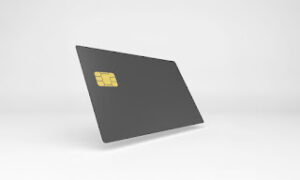About the author
Muhammad Yasir Rafique is a seasoned professional in the technology sector, with extensive expertise in web design, database management, and the development of robust web platforms. Currently serving as a Node.js Backend Developer at Signator, he specializes in crafting seamless backend functionalities, developing and integrating APIs, and leveraging third-party services to enhance application performance. His deep understanding of these domains has been instrumental in driving the success of various high-impact projects throughout his career.
Introduction
As a software engineer, I am used to the never ending quest to streamline development processes to get the result you need. This is why I am always on the lookout for tools and frameworks that will help increase productivity and decrease possible risks. In this article, I will take a closer look at Vue 3, a framework for building user interfaces and single-page applications. I will focus on its features and explain why I find them good or not so good.
What about performance?
The key parameter of every framework is its performance. Vue 3 has addressed some of the key performance bottlenecks of Vue 2, enhancing efficiency and gaining some useful new capabilities and features.
Vue 3 has received a smaller bundle size compared to its predecessor, which is advantageous for both developers and end-users. With a smaller bundle size, the load times are shorter and performance improves. End users can have faster access to an application, which improves the user experience, and developers can accelerate development cycles and debugging.
Refined Compiler
Vue 3’s compiler performs better tree-shaking than older versions. It eliminates unused code right during the build process. The aggressive tree-shaking gives Vue 3 a capacity to shrink its bundle size, making it smaller than those in Vue 2 and even Angular.
Focus on Modularity
In contrast with Vue 2, the focus in architecture has shifted towards greater modularity in Vue 3. Developers can now work exclusively with the modules they need to finish the project, which also reduces the bundle size.
Faster Rendering
Vue 3 has improved its rendering performance, which makes applications built with Vue 3 more responsive compared to Vue 2. Vue 3’s faster rendering translates into a fluid user experience, which is essential for complex UI’s and dynamic content.
The rendering in Vue 3 has become faster thanks to changes in the virtual DOM which has been rebuilt to reduce the overhead. Another important factor is the new reactivity system that uses Proxy-based reactivity. Vue 2’s reactivity system relied on `Object.defineProperty`, which was limited in tracking changes. Vue 3 has righted that wrong for the sake of more accurate and efficient reactivity.
Composition API
The Composition API is Vue 3’s killer feature that offers a new way to organize and reuse code:
It allows developers to group related logic together, making it easier to reuse across components. This modularity improves maintainability and reduces code duplication, which is especially beneficial in large-scale applications.
It better integrates TypeScript, which improves type inference and autocompletion. Developers gain the ability to catch type-related errors early, creating error-free code.
It simplifies the management of complex logic helping developers create reusable functions that encapsulate specific pieces of functionality.
Teleport
Teleport is Vue 3’s new feature that allows developers to move a part of the component’s template to a different location in the DOM. It simplifies the management of modals, tooltips, and other UI elements that need to be rendered outside their parent component’s hierarchy.
Teleport offers more control over element placement in the DOM, which gives developers an opportunity to move them to logical locations. This ensures that screen readers can interpret and read the content correctly and ensure that websites remain accessible.
Fragments
Vue 3 has introduced the fragments feature, which was absent in the previous version of the framework. While every component in Vue 2 must have a single root element, fragments in Vue 3 let developers create components with multiple root elements. Developers no longer need wrapper elements to write straightforward component structures and manage complex layouts.
Typescript Integration
Vue 3 enhances support for TypeScript in integrated development environments (IDEs) by adding better autocompletion, refactoring tools, and type checking within the IDE.
Migration
Last but not least, Vue 3 has features that help developers transition from Vue 2. They include migration build, which allows adopting Vue 3 features without breaking their existing Vue 2 code. Vue 3 also has a clear upgrade path, a set of tools and documentation to correctly upgrade Vue 2 projects. They include detailed migration guides, compatibility checkers, and tools to help identify and resolve potential issues during the upgrade process.
As we can see, Vue 3 developers have prioritised performance in the framework’s latest iteration. This is manifested in both upgrade of existing features and the introduction of completely new ones. I can say that Vue 3 definitely exceeds Vue 2 on many levels, and can easily compete with other popular frameworks like Angular.































